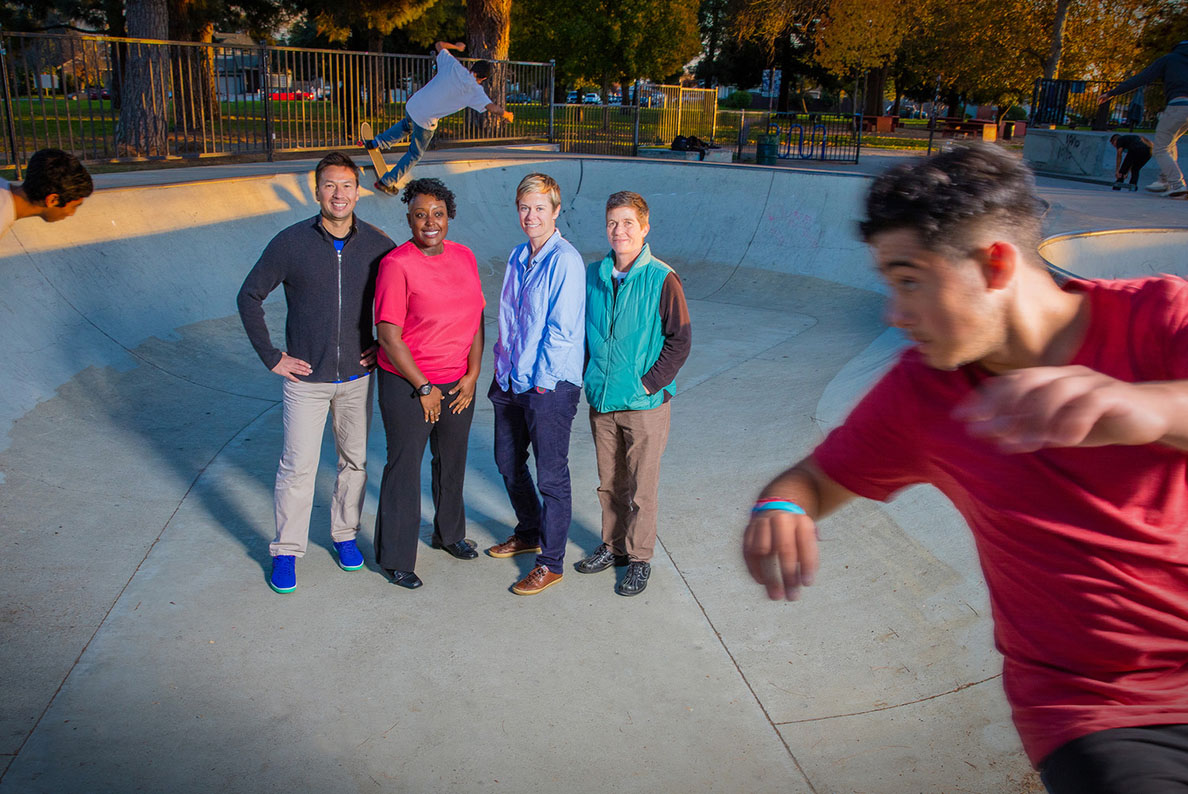
Moving Boarders
- BY KIMBERLY HAWKINS
- PHOTOGRAPHY BY GARVIN TSO
- December 12, 2018
Skateboarding, once considered an outsider sport, is ramping up in popularity, ready to make its debut at the Summer Olympic Games in Tokyo in 2020
“The game has changed from the core group of young guys who [were] skateboarding to it being a lot more of a mainstream activity,” said Matthew Atencio, associate professor of kinesiology at Cal State East Bay. “It’s one of the fastest-growing youth sports in the nation. But, it’s different. You don’t need lots of people. You don’t need a team. You don’t need a referee. You don’t need to rent a field. You don’t need uniforms.”
These differences between skateboarding and other “traditional” youth sports are what led Atencio and three fellow Cal State East Bay kinesiology professors, Becky Beal, ZáNean McClain and Missy Wright, to investigate how and why the sport is changing.
Their new book released just this month, “Moving Boarders,” focuses on skateboarding in San Francisco and how adults are now supporting skateboarding in ever increasing numbers and advocating the social benefits for youth as well as families and urban neighborhoods.
“As a lifelong skateboarder, I found ‘Moving Boarders’ to be an accurate reflection of skateboarding’s cultural qualities,” said Peter Whitley, Tony Hawk Foundation programs director. “More than ever, skateboarding presents a healthy—if sometimes subversive—option for today’s youth. ‘Moving Boarders’ is a vital account of what works in skateboarding.”
The authors spent five years and 150 hours at four Bay Area skate parks. There they observed social dynamics within each park and conducted formal interviews with key program leaders, parents, children and other youth who skateboard.
“Coming from more of a traditional sports background myself, I was able to learn about how emerging activities such as skateboarding provide unique experiences and contexts that may actually challenge how we think about coaching and participation in youth sports,” Atencio said. “Skateboarding has the potential to influence traditional youth sports for the better, in terms of how it prioritizes creativity, youth-based learning, social adaptability and can reduce the boundaries between adult and youth participants.”